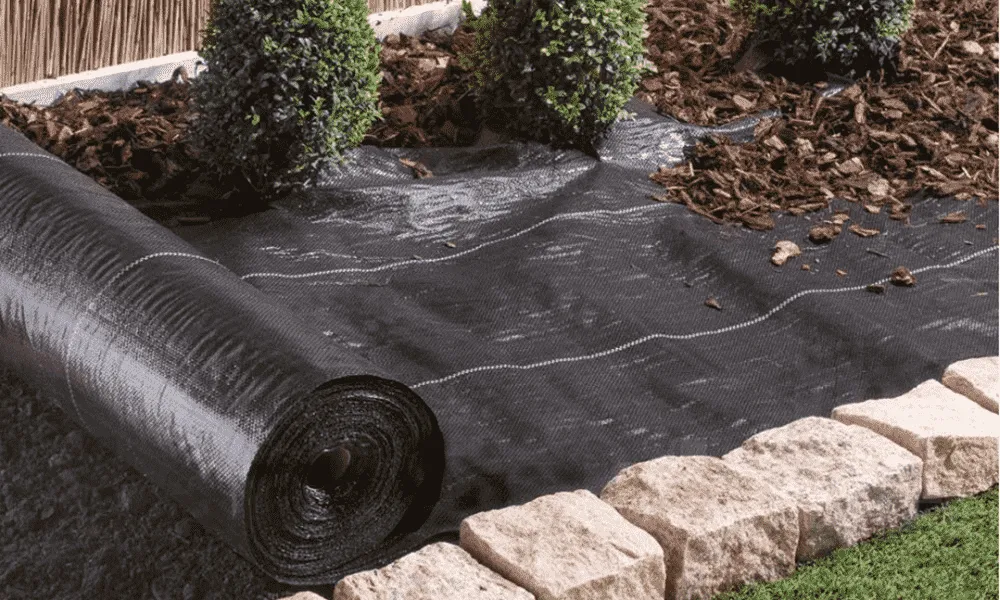© 2020 Hefei Better Technology Co., Ltd. All rights reserved.Site Map Designed by iwonder.cn
Tel
086-19155119097

Landscape Fabric, also known as Weed mat, Ground Cover, Weed Barrier or weed control fabric, which is a porous material used to suppress garden weeds by blocking sunlight and creating a barrier. It’s primarily used around vegetable gardens, flower gardens, shrubs, and trees to block weed growth while still allowing water and air to pass through to the soil.
Landscape fabric is a popular weed-control barrier among gardeners who want to rest their green thumbs. But not every gardener is a landscape fabric fan. Dig it or hate it, learning how to use landscape fabric in a garden or flower bed the right way can help save your plants from a DIY disaster –– and end your wedding chores.
What are the benefits of using landscape fabric in the garden?
Weed control isn’t the only benefit landscape fabric can provide for your garden or flower beds. The weed barrier also limits evaporation, insulates soil, controls erosion, and minimizes herbicide use.
If you’re using rock mulch in your flower or garden bed, landscape fabric can prove a handy tool. Why? Because small rocks tend to sink into the soil, which makes removing the stones and digging the ground difficult. Landscape fabric prevents the rocks from sinking by acting as a barrier between the rocks and soil.
How to Install Landscape Fabric?
Made from a variety of organic, synthetic, and recycled materials, most types of landscape fabric can last several years. Weed barrier comes in a variety of thicknesses and durability, so care should be taken when deciding which is right for your intended use. To avoid common problems and make the best use of the product, here's how to correctly install landscape fabric.
Step 1: Prepare the Soil
Landscape fabrics should be applied on bare soil so all weeds and other vegetation should be removed if necessary. If the area will be planted, mix in any desired fertilizers, compost, and other soil amendments. Then, level out the soil to avoid holes and divots that may accumulate water and cause drainage issues.
Step 2: Lay Out the Fabric
After the area has been prepped, measure out the amount of fabric you'll need to cover it. Make sure to allow a few inches of overhang on all sides. Lay the fabric onto the soil surface so that the edges of the pieces overlap each other by 6-8 inches. This will prevent weeds from growing through the seams and allow for a little movement.
Step 3: Secure to the Ground
One of the biggest mistakes people make when using landscape fabric is to not secure it in place with anything other than mulch. As the mulch breaks down or gets displaced, unsecured fabric can slide out of place and become an eyesore. Use landscape pins, aka garden staples, to secure the fabric to the soil. About one foot between pins is sufficient to hold the fabric in place. Excess fabric along edges can be doubled back or buried in the soil.
Step 4: Add Plants (Optional)
If you want to create a new garden in the area, set out your plants across the secured fabric where you want them to grow. Then, cut holes in the fabric just large enough to fit the root ball of the plant, leaving the pieces of fabric still partially attached. Cutouts can be slit down the middle and after plants have been set in place, fabric can be re-laid around plants to avoid soil exposure around the base of plants.
Step 5: Add Toppings
After all plants have been placed, add bark mulch, gravel, rock, etc. across the fabric at a depth of about two to three inches. Water any plants, directing the water at their base.
Maintenance Tips
Over time, landscape fabrics break down, tear, and in some cases, biodegrade. Yearly maintenance is key to keeping the weed barrier secure and functional. If metal pins rust away or break, replace them as needed to keep the fabric in place. As organic mulches decompose, they should be removed and replaced too. Regularly clean out leaves and debris that collect on top of inorganic mulches to prevent them from giving weeds a spot to grow. Eventually, your landscape fabric will wear out to the point it no longer stops weeds and you'll need to remove and replace it if desired.
If you are interested in our products, pls contact us : info@bettermicn.com